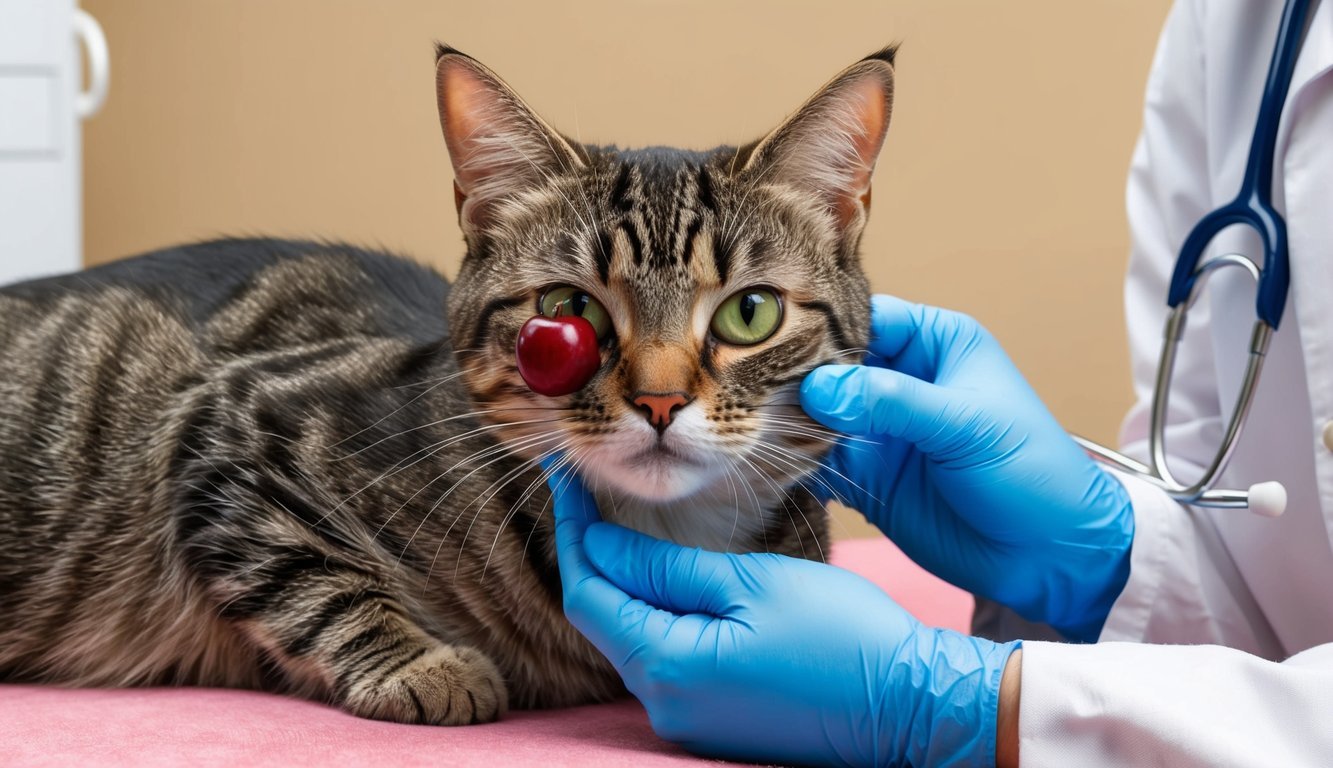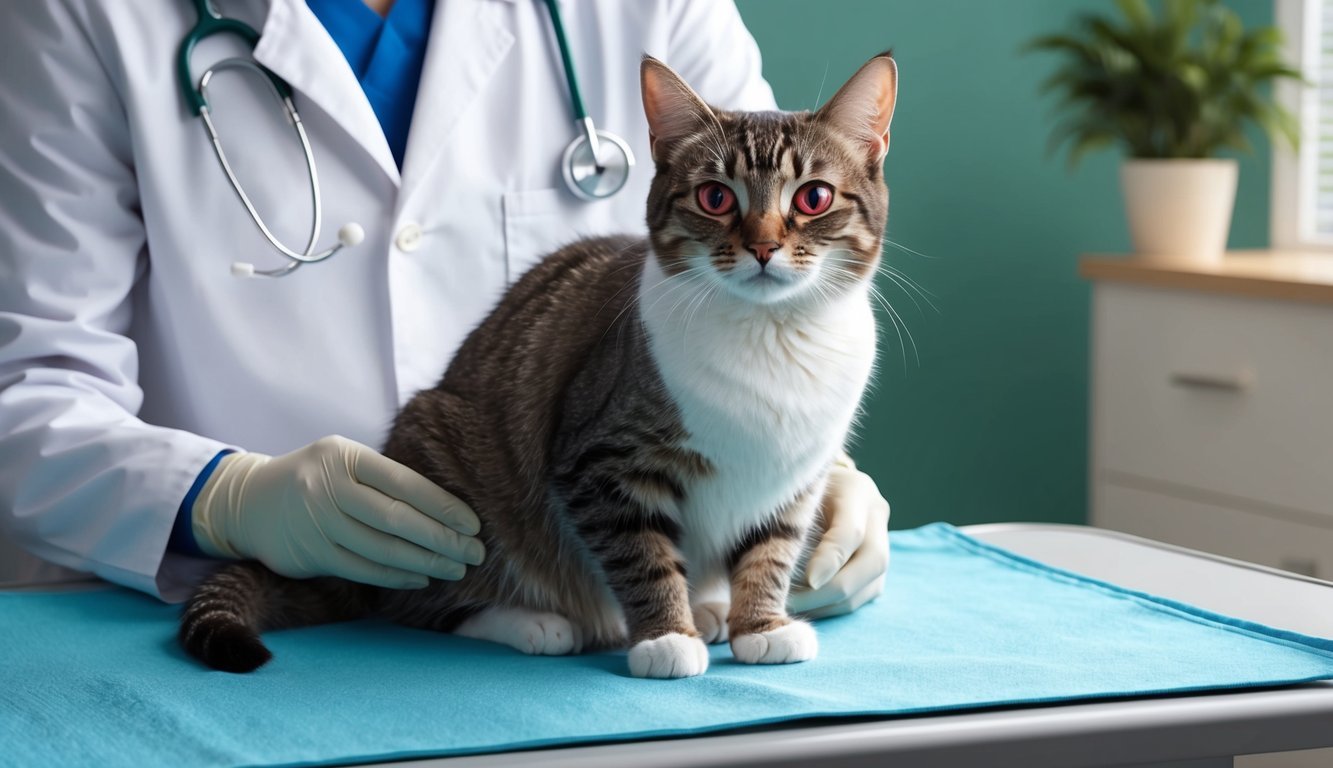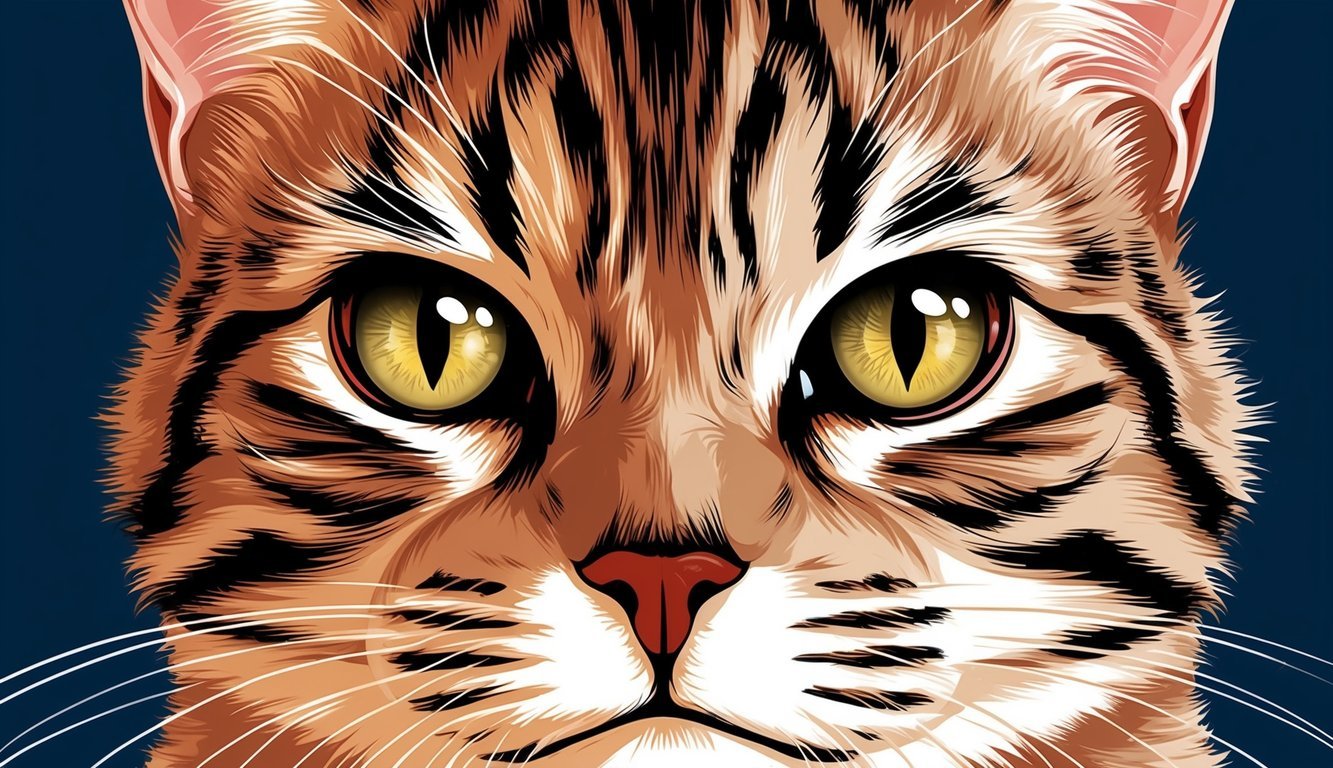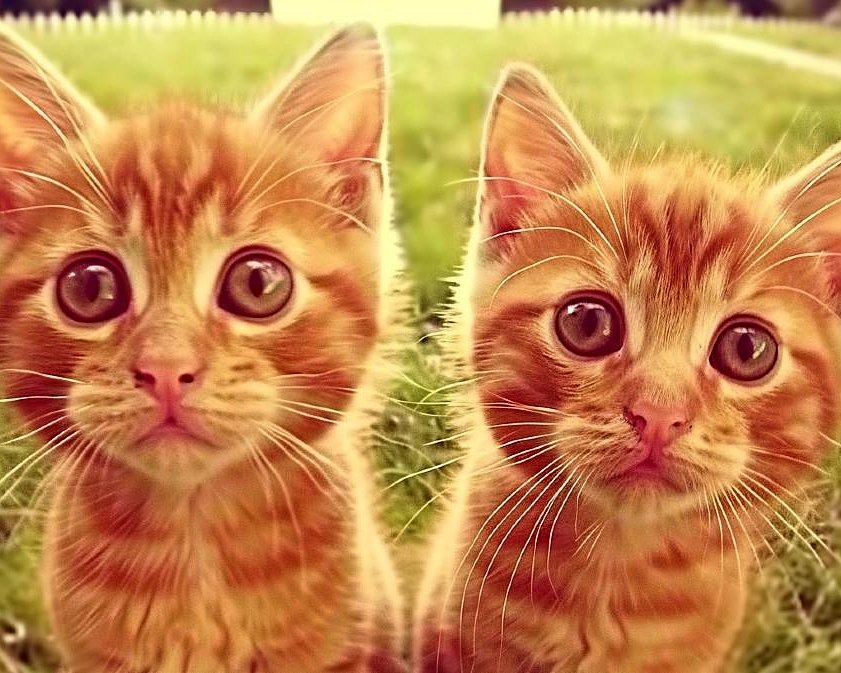Cherry eye in cats is a condition that many pet owners may encounter, yet few fully understand.
This issue arises when the third eyelid gland protrudes, resulting in a noticeable red mass at the inner corner of your cat’s eye.
It can lead to discomfort and irritation, making it essential to recognize the signs early on.
As you read on, you’ll discover the causes behind cherry eye, how to identify its symptoms, and what treatment options are available.
Understanding cherry eye not only helps you respond effectively but also ensures your feline friend remains comfortable and healthy.
Monitoring your cat for changes in their eyes can prevent complications associated with this condition.
If you notice any unusual signs, timely action can significantly improve your cat’s recovery and well-being.
Key Takeaways
- Cherry eye occurs when the third eyelid gland prolapses, causing a red swelling.
- Early diagnosis and treatment are crucial for preventing complications.
- Regular eye checks can help maintain your cat’s eye health.
Understanding Cherry Eye
Cherry eye is a condition affecting the eyes of cats, often involving the abnormal protrusion of the third eyelid.
It’s vital to grasp what this means for your cat’s health and how it can be managed effectively.
Definition and Overview
Cherry eye, or nictitans gland prolapse, occurs when the third eyelid becomes visible due to the gland’s displacement.
This gland is responsible for tear production, and when it prolapses, it can lead to discomfort and potential eye issues.
This condition is most common in younger cats, particularly those under six years old.
Signs include a reddish, swollen lump in the corner of the eye.
While cherry eye isn’t necessarily painful, it can lead to more serious complications if not treated.
Anatomy of Cat’s Eye
Cats have a unique eye anatomy, including a third eyelid called the nictitating membrane.
Unlike humans, who have two eyelids, cats benefit from this additional layer.
The nictitating membrane serves as a protective barrier for the eye.
When functioning correctly, this membrane is usually tucked away, out of sight.
In cases where the gland becomes displaced, it will bulge outward, creating the characteristic appearance of cherry eye.
Understanding this anatomy is crucial when noticing changes in your cat’s eyes.
Role of the Third Eyelid
The third eyelid plays a significant role in your cat’s eye health.
It helps keep the eye moist and provides protection against foreign objects and debris.
The nictitans gland, located within the third eyelid, produces a portion of the tears that keep your cat’s eyes lubricated.
When the gland prolapses, it not only becomes unsightly but can also hinder proper tear production.
This can lead to dryness and irritation, making it essential to seek veterinary care when you see signs of cherry eye.
Proper treatment often involves surgical correction to reposition the gland, ensuring the eye remains healthy and functions well.
Signs and Symptoms
When it comes to cherry eye in cats, recognizing the signs early can significantly impact treatment.
The symptoms primarily involve visible changes around the eye and potential changes in behavior due to discomfort.
Visible Signs of Cherry Eye
The most striking sign of cherry eye is a pink or red fleshy protrusion at the inner corner of your cat’s eye.
This protrusion is often large enough to block part of the eye and is usually described as a pink bubble.
You may notice this swelling appearing in one or both eyes.
The third eyelid gland that has prolapsed becomes visible, which can lead to irritation and inflammation in the area.
In some cases, the protrusion may come and go, but if it remains, it’s a clear indicator that your cat requires attention.
Visible signs often prompt you to seek veterinary advice, especially if the protrusion is accompanied by excessive tearing or redness.
Secondary Symptoms
In addition to the obvious protrusion, your cat might display secondary symptoms that indicate discomfort.
These can include pawing at the eye or squinting, suggesting that your cat is feeling irritation.
Changes in behavior, such as hiding or avoiding touch, can also occur when your cat is affected by cherry eye.
If you notice your cat showing signs of discomfort, it may become less active or more reclusive.
Inflammation around the eye can lead to redness and swelling, making your cat more sensitive to light.
Pay close attention to these signs, as they can help you understand your pet’s condition better and guide you in seeking appropriate treatment.
Causes and Prevalence
Understanding what leads to cherry eye is important for any cat owner.
This condition may arise due to a blend of genetic, breed-specific, and environmental influences.
Genetic Factors
Genetic predisposition plays a significant role in cherry eye development.
Certain breeds are more susceptible due to inherited traits.
This condition often emerges when the connective tissues that hold the tear gland in place are weak or malformed.
Burmese and Persian cats are prime examples of breeds prone to this issue.
If you own one of these breeds, watch for signs carefully.
The genetics behind this condition are not fully understood, but they undoubtedly contribute to its occurrence.
Breed-Specific Risks
Some breeds experience higher rates of cherry eye due to their anatomical features.
As mentioned, Burmese and Persian cats face increased risk due to their unique facial structures.
The distinctive shape of their skulls can affect tear gland positioning.
Owners of these breeds should be vigilant.
If you notice a pink or red protrusion in your cat’s eye, consult a veterinarian.
Being proactive is key to preventing complications.
Environmental Factors
While genetics play a significant role, environmental factors can also influence the likelihood of developing cherry eye.
Blunt trauma to the eye can lead to this condition, whether through accidents or rough play.
Additionally, other eye diseases might contribute to cherry eye’s emergence.
Conditions that irritate the eye could exacerbate the problem.
Maintaining a safe environment for your cat can help minimize risks associated with this condition.
Diagnosis and Examination
When diagnosing cherry eye in cats, a thorough evaluation by a veterinarian is essential.
Understanding the diagnostic processes can help you prepare for what to expect during the examination.
Veterinarian’s Assessment
During the initial assessment, your veterinarian will closely examine your cat’s eyes, specifically looking for any signs of cherry eye.
This condition is characterized by the prominence of the third eyelid gland.
The vet will also check for additional symptoms like redness, swelling, or discharge.
A detailed examination allows them to rule out other eye conditions that might be causing similar symptoms.
If your cat is diagnosed with cherry eye, your vet will discuss treatment options tailored to your pet’s needs.
Diagnostic Processes
To confirm the diagnosis, your vet may employ several diagnostic techniques.
A physical examination is crucial, where the visible gland of the third eyelid is assessed.
They may perform an ophthalmic examination, evaluating tear production and checking for corneal ulcers through staining methods.
In some cases, a biopsy may be taken if there are concerns regarding other underlying conditions.
All these processes are integral in ensuring that cherry eye is accurately diagnosed, allowing for prompt and effective treatment measures.
Treatment Approaches
When dealing with cherry eye in your cat, you have multiple strategies to consider.
These can range from medical management options to more invasive surgical interventions, each with its own set of recommendations and follow-up care.
Medical Management
Medical management may be suitable in mild cases or as a preliminary approach.
Your veterinarian may recommend ophthalmic ointments or eye drops to reduce inflammation and irritation.
These medications can help keep the eye lubricated and comfortable.
While these treatments may not fully address the issue, they can alleviate symptoms temporarily.
If the prolapse is minor, some cats may not need immediate surgery.
Always follow your vet’s guidance when administering any medication.
Surgical Interventions
For cases where cherry eye is pronounced, surgical correction is often necessary.
The most common technique used is known as the pocket technique.
This involves repositioning the prolapsed gland back to its rightful place to restore its function.
The surgery usually takes less than an hour and is performed under anesthesia.
Post-surgery, you might notice some swelling, but this typically subsides as your cat heals.
It’s essential to have a frank discussion with your vet about the procedure, risks, and expected outcomes.
Post-Surgical Care
After surgery, post-surgical care is critical for your cat’s recovery.
Your veterinarian will likely recommend using an Elizabethan collar to prevent your cat from scratching or rubbing the affected eye.
Pain management may also be provided in the form of pain relief medications.
Keeping your cat calm and monitoring for any signs of complications, like increased redness or discharge, is important.
Regular follow-ups with your vet will help track healing progress.
Prognosis and Recovery

Understanding the prognosis and recovery process for cherry eye in cats is essential for ensuring your pet regains optimal eye health.
Recognizing success rates and knowing how to care for your cat post-surgery can help you feel more prepared.
Success Rates
The success rate for surgical intervention in cherry eye is generally high.
Most cats experience a significant improvement in eye function after the surgery.
Studies indicate that approximately 80-90% of surgeries effectively resolve the condition.
Post-surgical complications, such as dry eye, may arise but are relatively uncommon.
Early detection of cherry eye often leads to better outcomes.
If your cat has a history of this condition, discussing preventive measures with your vet can enhance long-term eye health.
Recovery and Aftercare
Recovery from cherry eye surgery typically takes about 1-2 weeks.
During this time, proper aftercare is crucial.
You should follow your vet’s instructions closely to ensure healing:
- Medications: Administer any prescribed anti-inflammatory or antibiotic medications promptly.
- Monitoring: Keep an eye on the surgical site for signs of swelling, redness, or discharge.
- E-Collar: Consider using an e-collar to prevent your cat from rubbing or scratching the eye.
Regular follow-up visits are important to assess your cat’s eye function and ensure there are no complications.
With proper care, your cat will be back to their playful self in no time.
Prevention and Maintenance

Monitoring your cat’s eye health is essential for preventing cherry eye and maintaining their overall well-being.
By understanding early signs and implementing long-term health strategies, you can support proper tear production and reduce the risk of related issues.
Early Detection Tips
To catch cherry eye early, keep an eye on your cat’s eyes regularly.
Look for any unusual changes, like a pink or red mass appearing at the inner corner of the eye.
This might indicate the onset of cherry eye.
Be attentive to signs of discomfort, such as rubbing at the eyes or excessive tearing.
If your cat seems to have dry eyes, it could signal inadequate tear production, increasing the risk of conditions like keratoconjunctivitis sicca.
Regular veterinary check-ups are crucial to assess eye health.
Your vet can offer insights into any early warning signs you might miss.
Long-Term Health Strategies
Maintaining your cat’s overall eye health involves a combination of good nutrition and regular veterinary care.
A balanced diet rich in omega-3 fatty acids can help support tear production.
These nutrients keep the eyes lubricated and decrease the risk of dryness and irritation.
You should also ensure your cat stays hydrated.
Dehydration can exacerbate dry eye conditions.
If your cat is prone to eye issues, consider using a humidifier in your home to create a more comfortable environment.
Regular veterinary visits allow for early detection of potential problems.
Your vet can recommend treatments to keep your cat’s eyes healthy and monitor any changes that might indicate a need for intervention.
Complications to Monitor

After addressing cherry eye in your cat, it’s crucial to keep an eye on potential complications.
Being informed about issues that may arise can help ensure your cat’s eye health remains a priority.
Common Post-Treatment Issues
Post-treatment, your cat may face several complications.
One such issue is conjunctivitis.
This inflammation can develop as a result of irritation from the surgery or as a secondary reaction.
Watch for discharge, redness, or excessive tearing.
Corneal ulcers are another concern.
These can occur due to trauma or changes in eye lubrication after the procedure.
Monitor your cat for symptoms like squinting, pawing at the eye, or a cloudy appearance in the cornea.
To support recovery, follow your veterinarian’s recommendations closely.
Regular check-ups can help catch these problems early, ensuring prompt treatment if needed.
Signs of Infection or Relapse
Your cat could show signs of infection or even a relapse of cherry eye.
Look for redness or swelling around the eye, as these can indicate infection.
If the area appears inflamed, it may require immediate veterinary attention.
Discharge from the eye is another red flag.
Clear or colored discharge could signal a developing infection or irritation.
Finally, be mindful if you notice the third eyelid reappearing.
This could mean that the gland has prolapsed again or that the eye isn’t healing properly.
If you observe any of these signs, consult your veterinarian without delay to address the issue.
Frequently Asked Questions

Cherry eye is a condition that can cause discomfort for your cat.
Understanding its causes, management options, and treatment urgency can help ensure the best care for your feline friend.
What can lead to a cat developing cherry eye?
Cherry eye typically occurs due to weakening or prolapse of the gland that produces tears.
Genetic predisposition can play a role, making certain breeds more susceptible.
Other contributing factors include injury or inflammation around the eye area.
Can I manage my cat’s cherry eye at home, and if so, how?
While some mild cases may appear manageable, home remedies are not usually recommended.
If your cat shows signs of cherry eye, it’s best to consult a veterinarian for appropriate treatment.
They may prescribe medications to help reduce inflammation and discomfort.
Are there early signs of cherry eye that I should watch for in my cat?
Early signs include a pink or red fleshy protrusion from the inner corner of the eye.
You may also notice your cat pawing at the affected eye, as well as redness or watering.
Being observant can help you catch the condition early.
How urgent is it to get treatment if my cat shows signs of cherry eye?
It’s important to seek prompt veterinary care if you notice signs of cherry eye.
Delaying treatment could lead to complications, such as discomfort or irritation, and may require more extensive interventions later.
Does cherry eye in cats resolve on its own, or is intervention necessary?
Cherry eye typically does not resolve on its own.
In most cases, surgical intervention is needed to reposition or correct the gland.
Without treatment, the condition may persist or worsen, leading to further issues for your cat.
What’s the typical cost range for cherry eye surgery in cats?
The cost for cherry eye surgery can vary significantly based on your location and veterinary clinic.
On average, you might expect to pay anywhere from $200 to $800.
Be sure to discuss costs and payment options with your veterinarian before proceeding.

